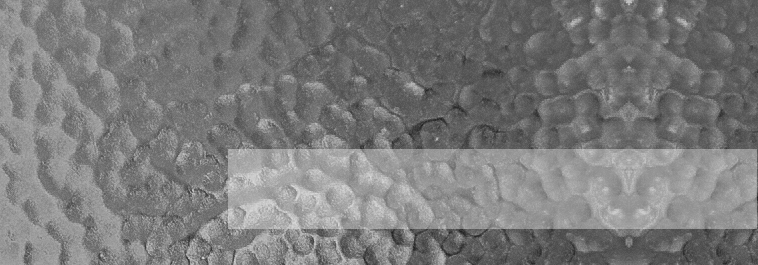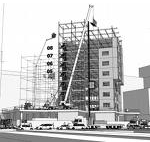|
Cenosphere or Sphalerite - A High Value-Added Product Derived from Fly Ash
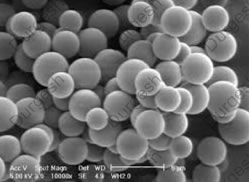
Cenospheres, also known as Sphalerite, play a versatile role in various materials, spanning from paints and finishes to plastics and caulking. Despite their long-standing use in concrete, their widespread application remains relatively unknown. The high-strength, small-sized, lightweight, non-porous, free-flowing, hollow ceramic spheres are generated in coal-fired thermal power plants during the combustion of lignite or coal at elevated temperatures. Their unique physical properties make cenospheres valuable across multiple industries. Serving as fillers in numerous applications, they replace resins and minerals, offering benefits such as reduced shrinkage, enhanced thermal insulation, weight reduction, improved fire resistance, and easier application.
Origin of Cenospheres
Ranging in size from 10 to 600 micrometers, Cenospheres or Sphalerite appear like dust to the human eye. More commonly, they are extracted from fly ash, a by-product generated in coal-fired power stations. Many power plants adjust their combustion parameters to obtain desired quantities and qualities of recoverable cenospheres. Despite being associated with fossil fuel, cenospheres are considered a more environmentally friendly chemical feedstock as they repurpose a waste product. Although constituting only 1%-3% of fly ash, this waste, if not utilized, would typically be buried or carried away by the wind, contributing to air pollution.
Multiple Applications of Cenosphere across Diverse Industries
Derived from the Greek words "kenos" meaning hollow and "sphaera" meaning sphere, cenospheres are spherical formations of aluminum silicate, a glass-like material containing a mixture of oxygen, nitrogen, and carbon dioxide. Due to their characteristics, including low density, small size, spherical shape, mechanical strength, high melting temperature, chemical inertia, insulating properties, and low porosity, microspheres, also known as cenospheres, have diverse industrial applications. These properties make them especially well-suited for reinforcing materials and endowing resistance to corrosion, thermal insulation, or sound insulation in coatings and paints. Cenospheres can be aptly described as multifunctional fillers, seamlessly integrating into various resins and binders, including thermoplastics and thermosetting compounds.
- Utilizing Cenospheres in Paints and Coatings: Cenospheres find diverse applications in the paint and industrial coating sector, owing to their added benefits. In coatings, they are frequently employed to manage infrared radiation, providing an edge over alternatives that focus solely on limiting thermal conductivity. The inclusion of cenospheres enhances the paint's quality by improving its volume and density. Post-application on the surface, these ceramic beads tend to contract, resulting in a densely packed film on the wall.
- Cenospheres Use in Plastics and Polymers: Cenospheres play a pivotal role in the production of plastics and polymers, serving as prominent fillers in plastic composites. Their inclusion contributes to weight reduction, heightened stiffness, and enhanced thermal resistance of the material. Additionally, cenospheres are employed to reshape plastics, leveraging their strength and minimal shrinkage properties. These versatile components find applications in modern composites within the automotive industry.
- Cenosphere in Oil and Gas Industry: Cenospheres play a crucial role in the Oil & Gas Industry by serving as additives during the drilling of boreholes, wells, and oceans for oil extraction. When appropriately added, these cenospheres can enhance drilling strength and intensity by up to 50%. Additionally, they find application in plugging oil and gas wells and filling the expansion spaces around the wellbore. In the construction of oil tanks, cenospheres are blended with cement solutions to create a hardened material that offers stability and heat-insulating properties. This mixture is utilized to provide structural strength. Moreover, cenospheres play a vital role in the production of acid-grouting compounds, lightweight grouting mixtures, and applications such as gas condensate wells and liquids for damping oil and gas.
- Cenospheres in Construction Industry: Cenospheres stand out as essential components in the construction industry, finding widespread use due to their lightweight and low-density characteristics. Their ability to replace sand, a conventional construction material, is attributed to their low weight and density. In addition to their structural benefits, cenospheres contribute to sound reduction, lowering sound transmission by 40%. Their thermal insulation properties make them versatile elements for ceilings, walls, and floors in construction projects. Innovations in the construction sector have led to the development of diverse cenospheres by-products. For instance, magnetic cenospheres are employed in the methane oxidation process, serving as a novel catalyst in this application.
- Cenospheres in Automotive Industry – Cenospheres play a pivotal role in the automotive sector by serving as fillers in plastic and rubber components, contributing to the reduction of vehicle weight and enhancement of fuel efficiency. Additionally, their application extends to the production of plastics and polymers, where they mitigate shrinkage in both thermoplastics and thermosetting plastics. Furthermore, cenospheres find utilization in the creation of modern automotive composites known as syntactic foams. Particularly, aluminum-based syntactic foams are gaining prominence in various automotive applications, showcasing the versatility of cenospheres in advancing technological innovations within the industry.
The escalating demand for cenospheres, also known as Sphalerite, is expected to experience a significant and rapid upsurge. This growth can be attributed to the expanding array of applications and the abundant availability of raw materials, primarily sourced from both new and existing thermal power stations. Furthermore, the global surge in end-use industries utilizing cenospheres and the widespread applications of Sphalerite in global markets, including ceramics, plastics, construction, recreation, automotive, technology, and energy, among others, are pivotal factors projected to drive the demand for cenospheres. Consequently, this is anticipated to propel the global cenospheres market in the forecast period, with expectations of sustained dominance throughout the foreseeable years.
PROPERTIES OF CENOSPHERES
Cenospheres are small, high strength, extremely lightweight, free flowing, non porous, hollow ceramic spheres. The hollow ceramic glass bubble shape of the Microsphere results in a variety of uses other than simply being used as a Light-Weight Filler.
Cenospheres are a Filler used to replace minerals and resins where the benefits may be as diverse as weight reduction, improved thermal insulation, reduced shrinkage, improved fire resistance or simply easier application.
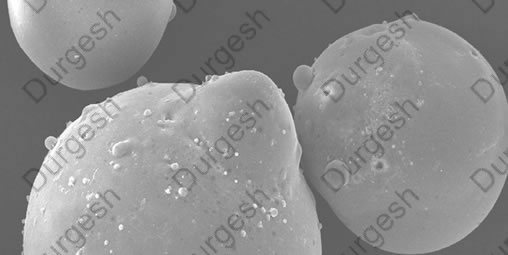
Cenospheres are used primarily as lightweight fillers in the oil and gas, plastics, building, refractories, automotive, aerospace and surface coating industries.
What Are The Advantages of Using Cenospheres?
Manufacturing Benefits: The spherical shape of Cenospheres improves flowability in most applications and provides a more even distribution of the filler material. The natural properties of Cenospheres make it possible to use them either in dry or wet slurry form. Cenospheres are easy to handle and provide a low surface area-to-volume ratio. Due to their inert properties, they are not affected by solvents, water, acids, or alkalis. Cenospheres are 75% lighter than other minerals currently used as a filler or extender and are 30 percent lighter than most resins.
Lowered Cost: Utilization of Cenospheres reduces the cost of manufacturers' raw materials. The savings may be recognized in one or more of the following benefits:
|
|
|
| Reduced Raw Materials |
|
Cost Improved Flowability |
| Reduced Resin Demand |
|
Improved Insulation Values |
| Resistant to Resin Absorption |
|
Reduced End Product Weight |
|
|
|
Product Improvement: Cenospheres can improve manufacturers' end products by improving strength, durability, and by reducing weight. Cenospheres also provide added buoyancy, better insulative properties, and reduced shrinkage and warpage values. Their spherical shape may improve product stability and increase resistance to impact. Used in the production of insulating materials, Cenospheres better control both sound values and thermal conductivity. Many other benefits or advantages may be realized depending on the application.
Improved Marketing Strategies: Improvements in the durability and strength of manufacturers' end products and a reduction in product weight enhance marketing strategies. A largely unaddressed advantage for product manufacturers is an environmentally responsible end-product. Manufacturers can use Cenospheres to produce an improved finished product without adding to the Earth's overburdened landfills. The chemically inert properties of Cenospheres make them 100 percent recyclable. With society's heightened interest in environmental concerns, the recyclable properties of Cenospheres can and should be used in marketing the manufacturers' end product.
GRADES OF CENOSPHERES
Our Cenospheres is Processed & Graded as per the following Quality Parameters:
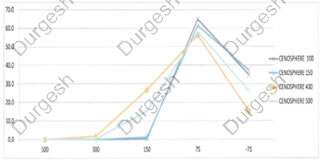
- Crush Strength
- Specific Gravity
- Particle Size Distribution
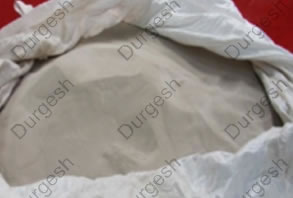
DMPL – 400 µm
- Our Standard Specification of Cenospheres
Standard Grades :
DMPL – 0.85 SG
DMPL – 0.80 SG
DMPL – 500 µm
DMPL – 400 µm
DMPL – 300 µm
Speciality Grades :
DMPL – 0.75 SG
DMPL – HIAL
DMPL – LFE
DMPL – 150 µm
DMPL – 100 µm
DMPL – 53 µm
If any of the above grades are beneficial to your application, please contact us for detailed Specification-Sheets & COA's.
PROCESSING PLANT
We have been Processing & Exporting Cenospheres since 2003 onwards. Our Processing Facility is located in Giridih (Jharkhand), India.
Our Customers are spread across the Globe. Our Cenospheres have been regularly used for several years in major markets such as USA, Middle East, North Africa, Japan, South-East Asia, Europe & South America.

Our Cenosphere Plant is spread across 5 Acres of land area with a storage space of above 50,000 Square Feet for Finished Product and 100,000 Square Feet for Raw Material.
Plant: We have state-of-the-art fully-Automated Processing Plant for Cenospheres. The system is fully automatic starting from raw material feeding to ultimately producing the Finished Product that is discharged directly into Jumbo Bags.
The Plant has an annual capacity to produce above 3,000 Metric Tons of Cenospheres per Year.
The Processing Plant has been custom-designed by us based on our several years of experience. The Processing-system has been developed based on Global Techniques, but further enhanced & refined by our goal to produce the most Light-Weight Cenospheres in India.
Our Processing Plant is operated under strict HSE & QAQC standards & complies to global norms.
Our Processing-Plant has been Approved by several Global Customers & Fortune-500 Companies as the "Best Processing Facility of Cenospheres in India."
QUALITY CONTROL
In-House Laboratory
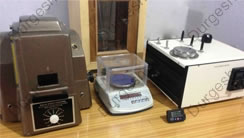
We have a fully-equipped International Standard in-house Laboratory at our Plant where we follow strict QAQC methods to maintain our Cenospheres quality.
We test the following Parameters of Cenospheres :
a) Crush Strength
b) Specific Gravity
c) True Density
d) Sinker's
e) Particle Size Distribution
f) Moisture
We issue a Certificate of Analysis along with each Shipment Lot with the test results for the above parameters.
Apart from our In-House Testing Laboratory, our Cenospheres can be Certified from the following International Agencies:
PACKAGING
We offer high-quality packaging for Cenospheres, tailored to our customer's specific requirements.
Our Standard Packaging of Cenospheres are :
- Big Bags of 500 KGS or 600 KGS
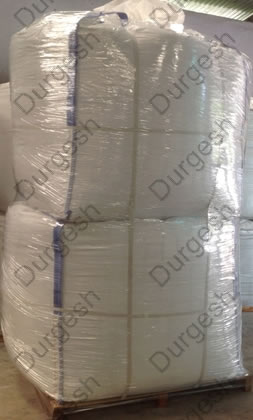
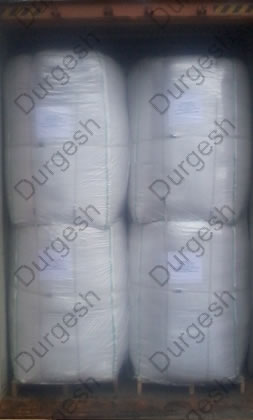
- Paper Bags of 20 KGS or 25 KGS
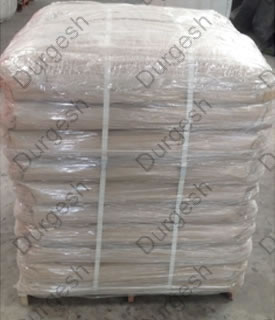
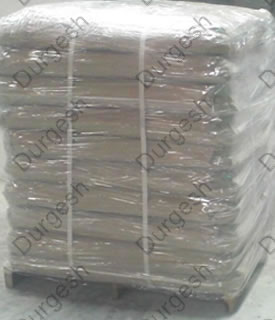
|
